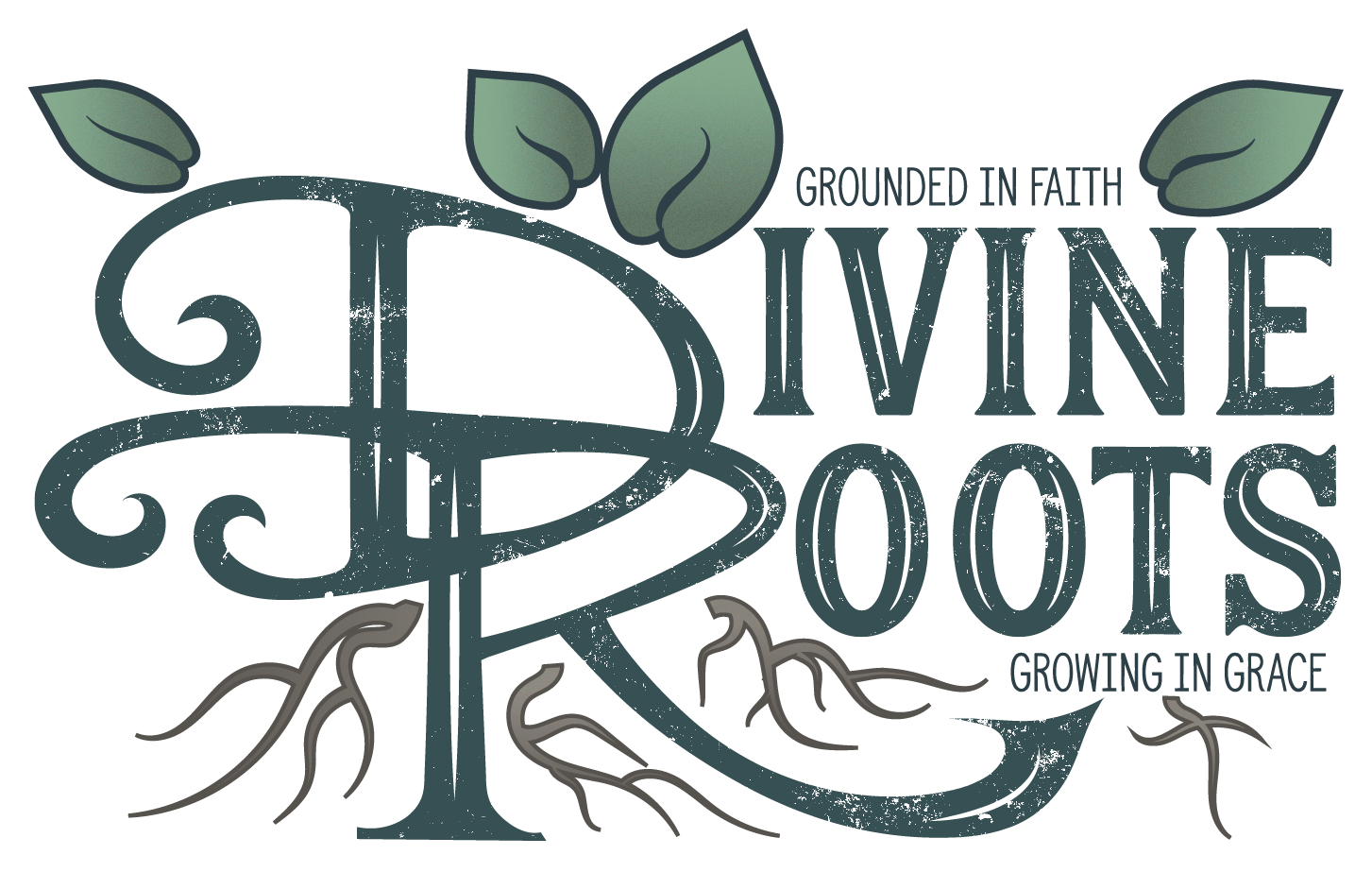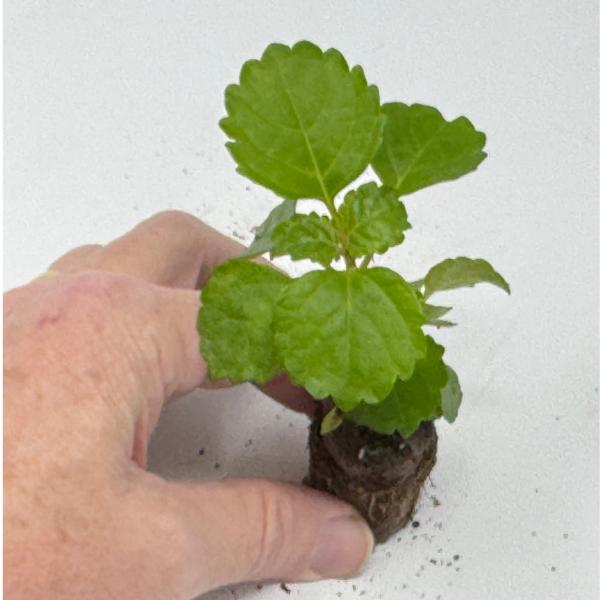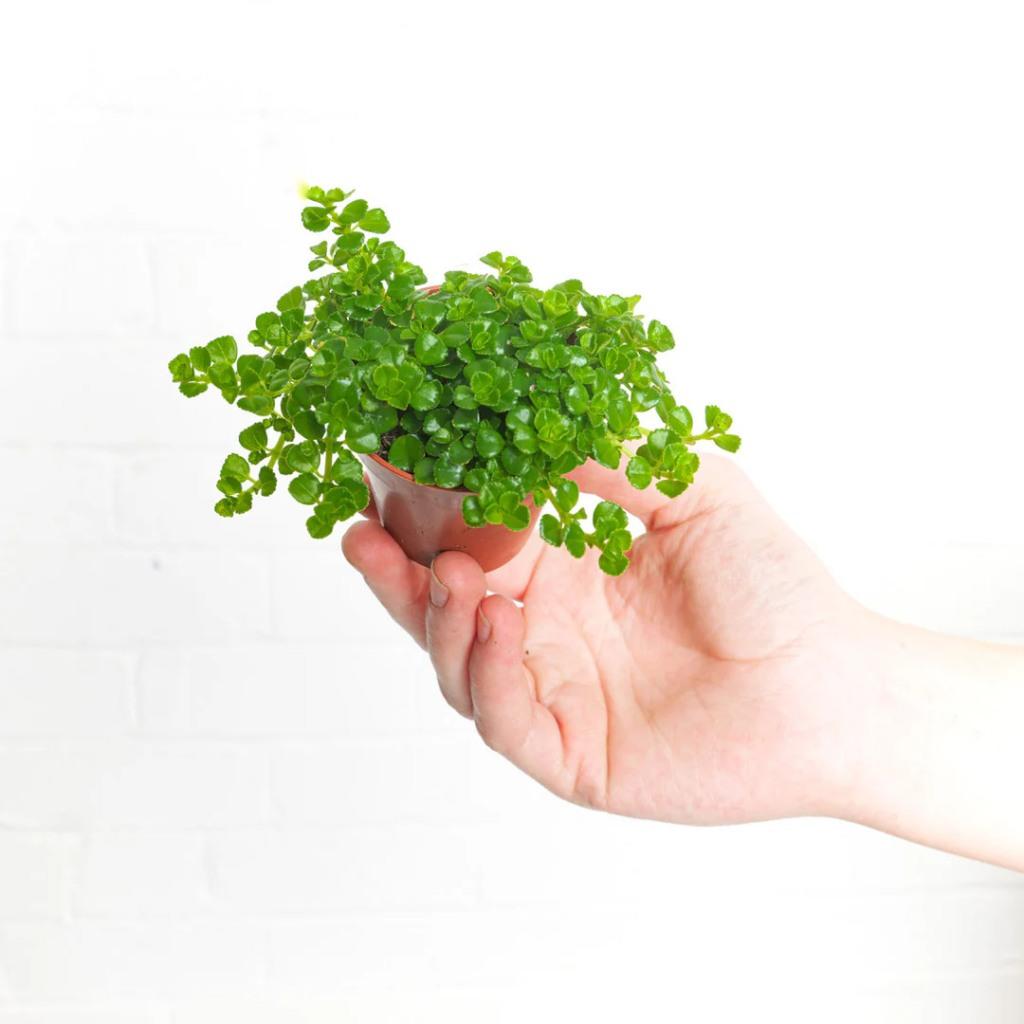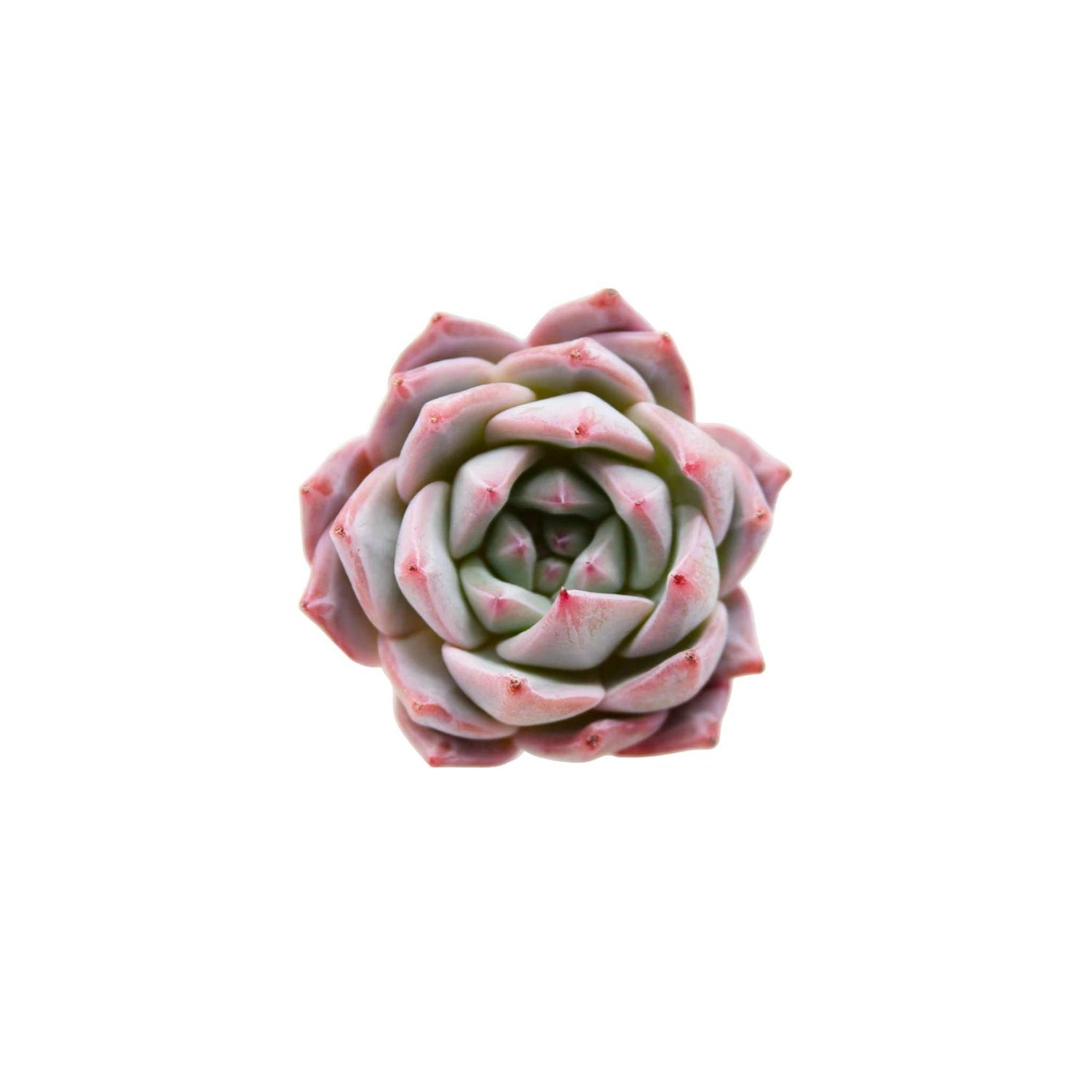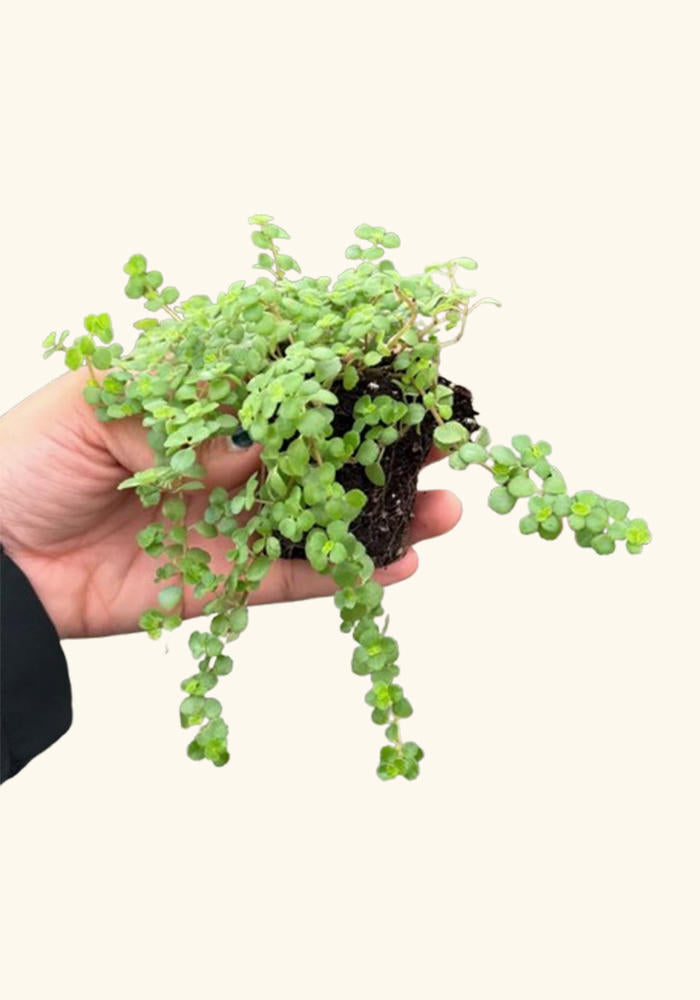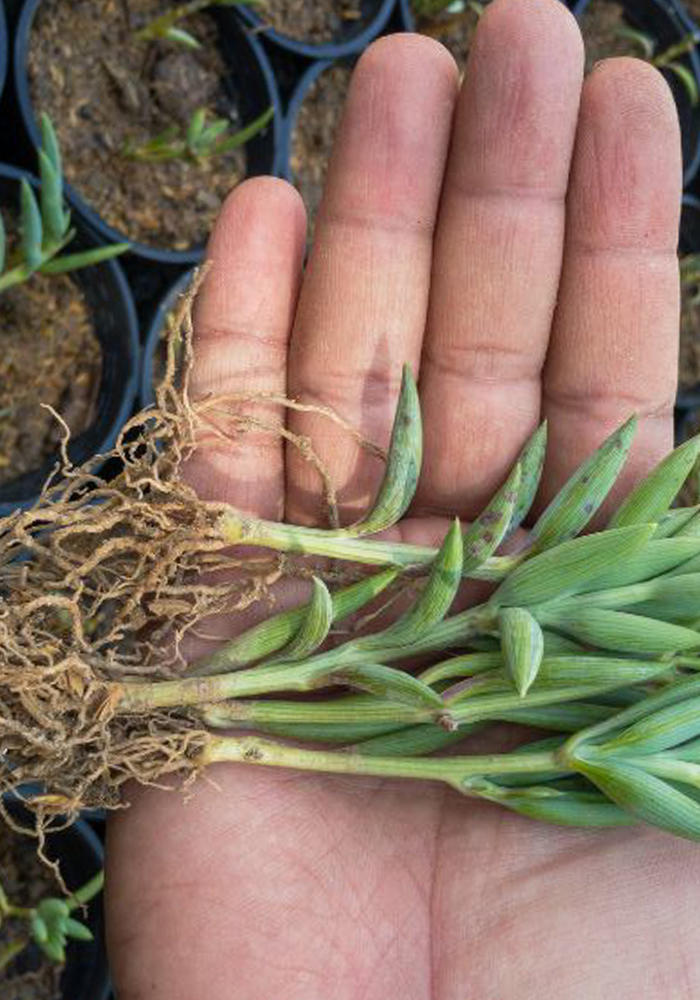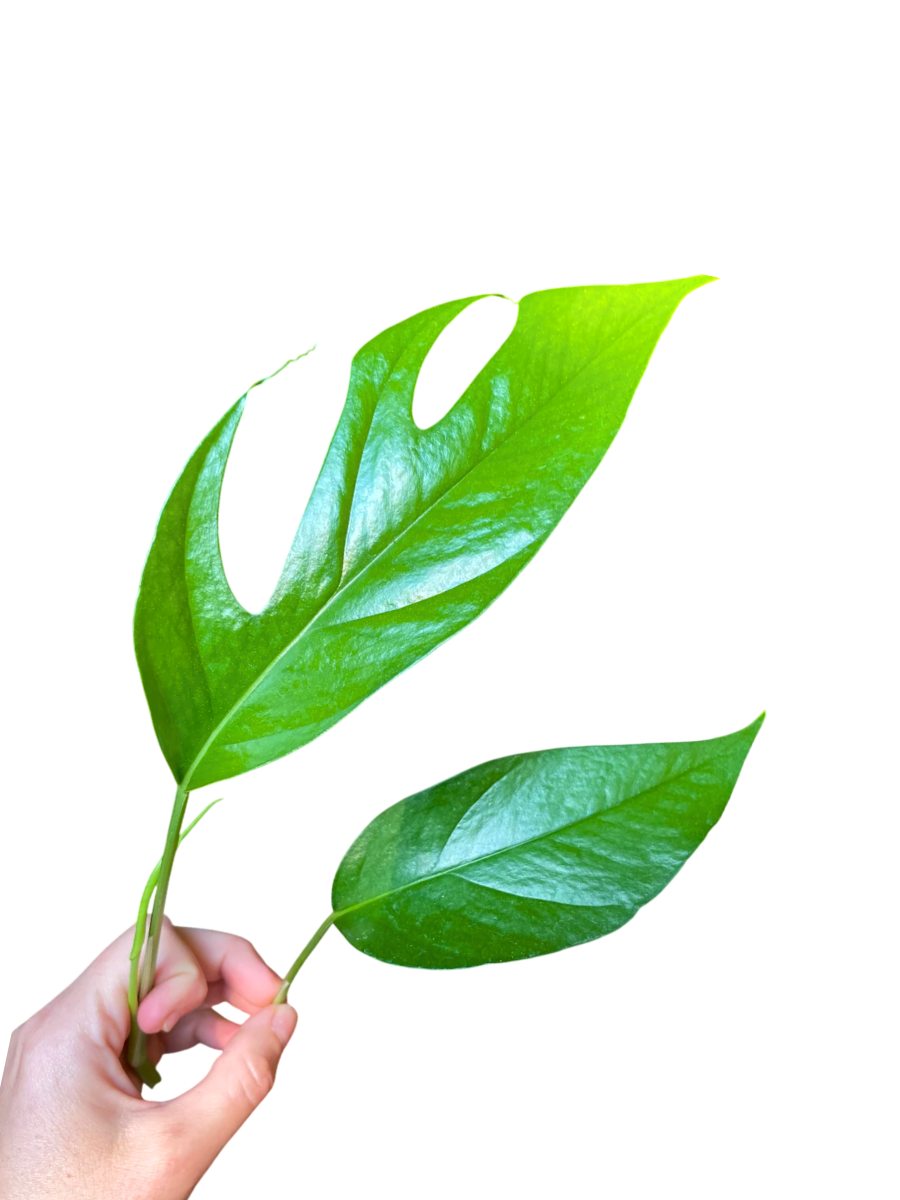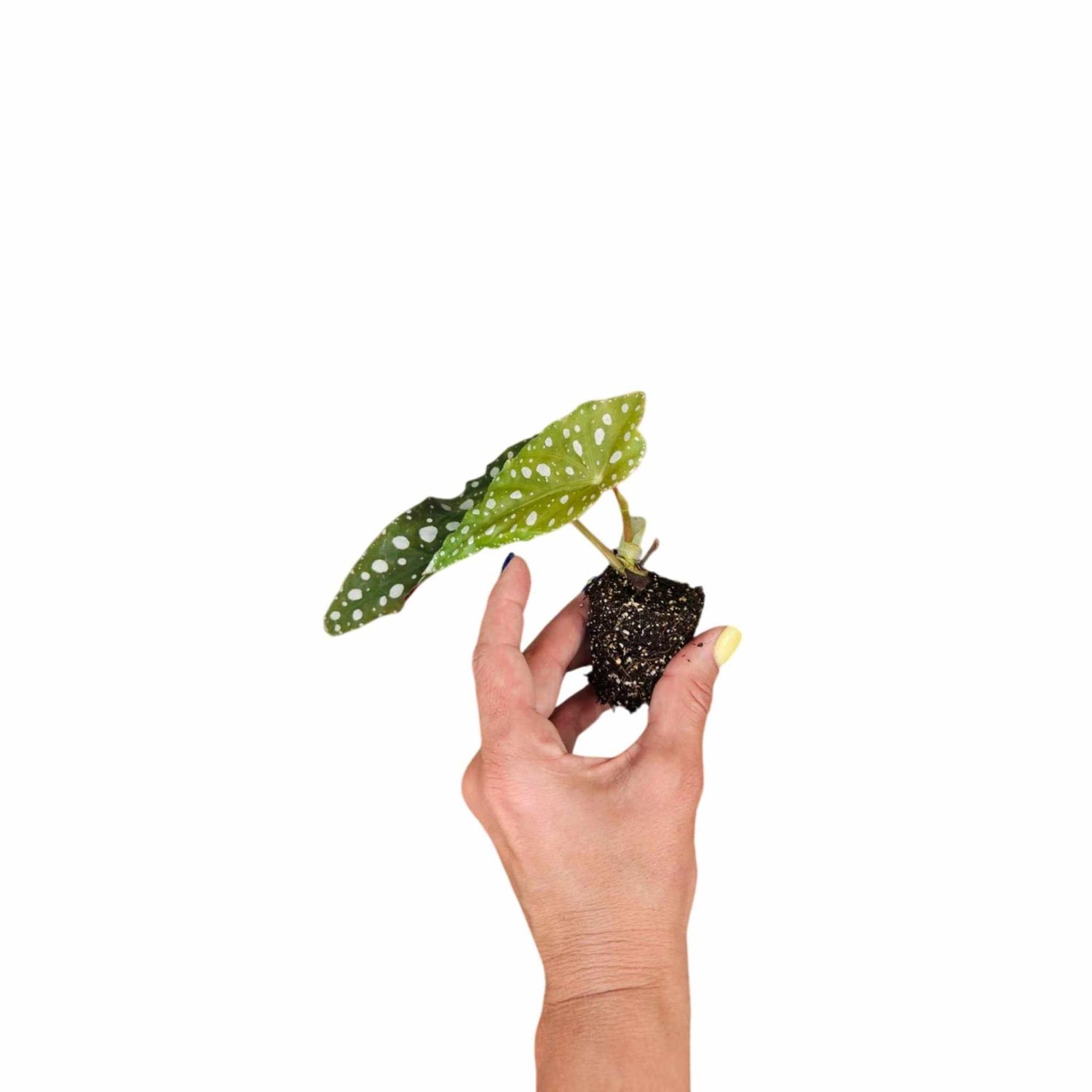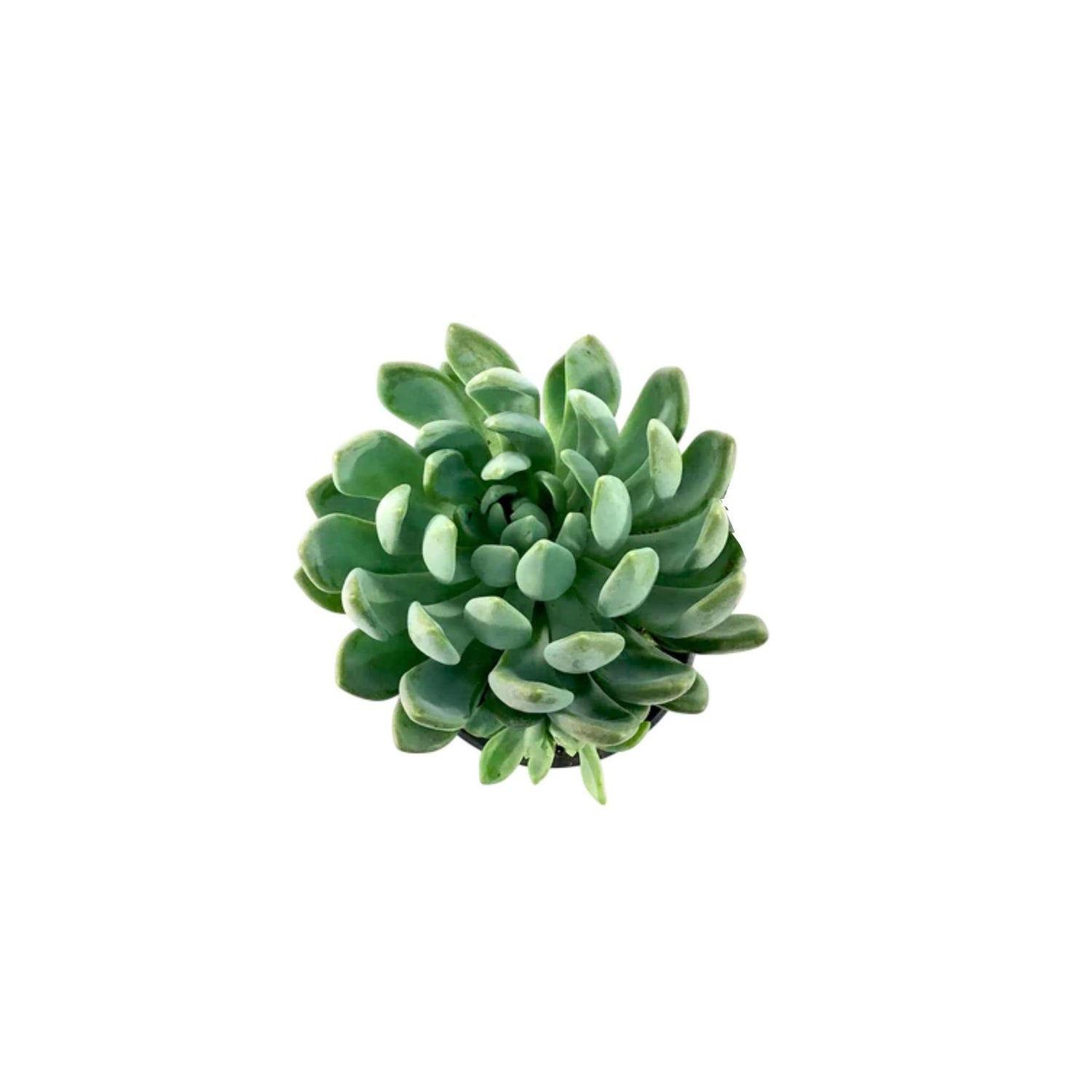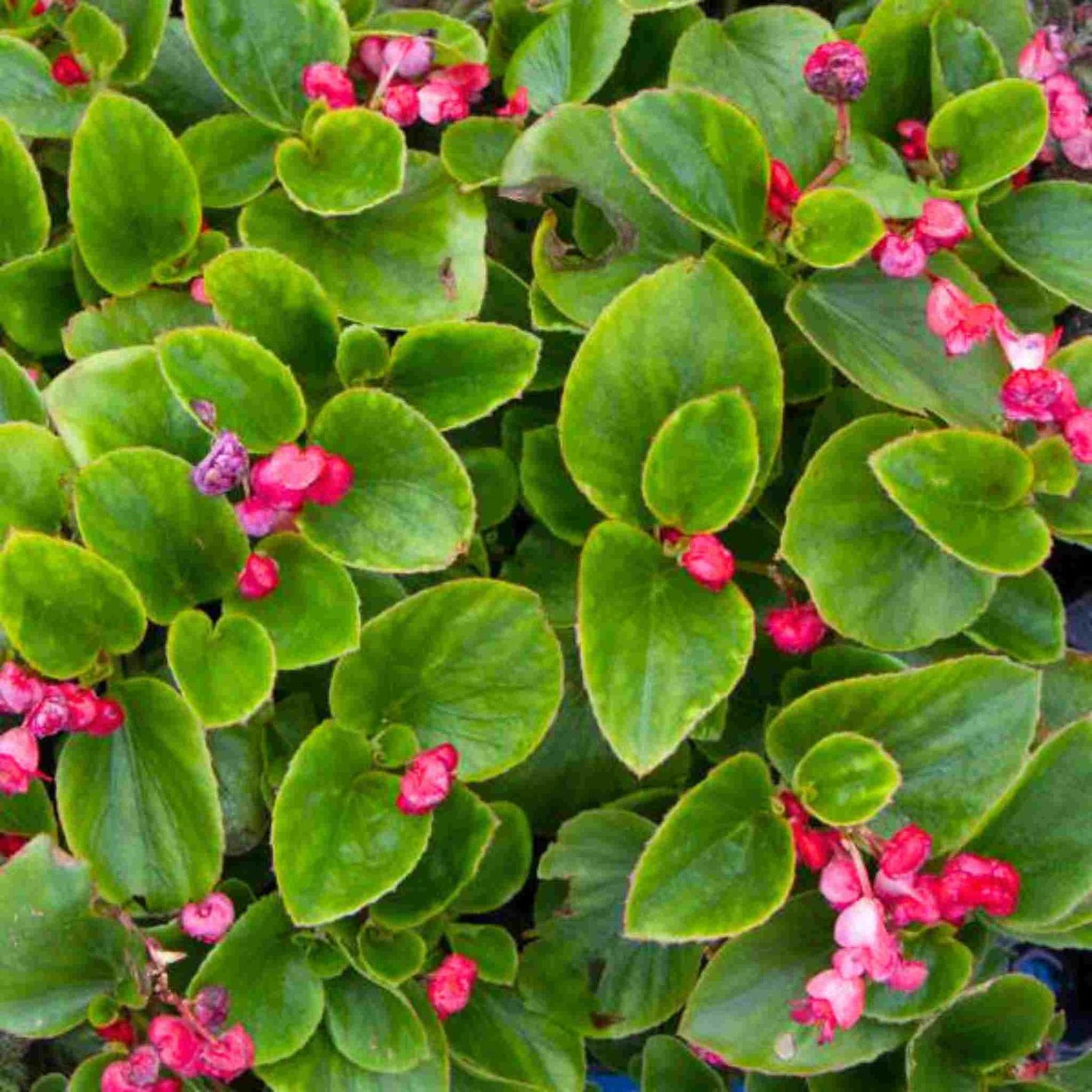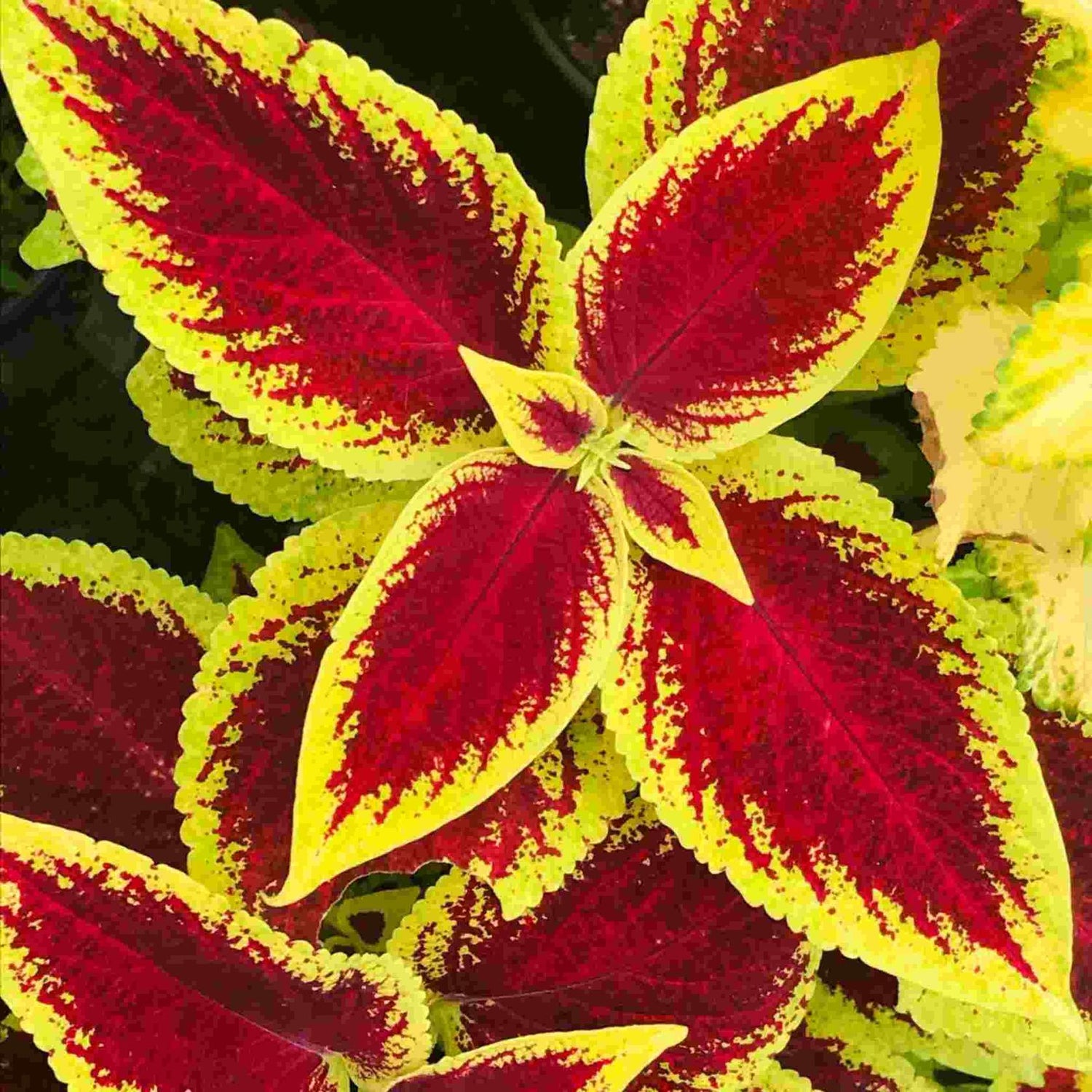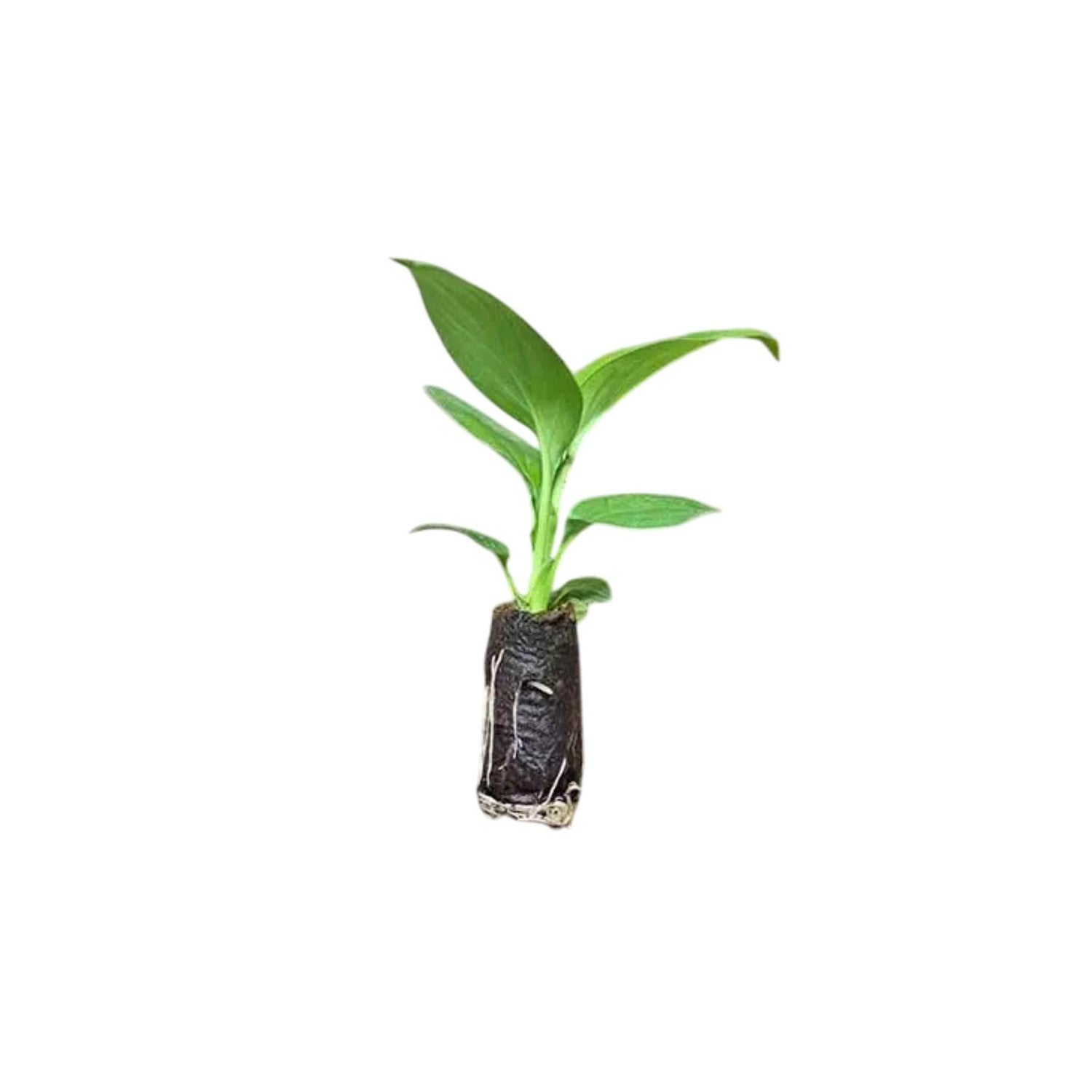Sort by:
71 products
71 products
The Plectranthus Swedish Ivy (Plectranthus verticillatus) is an easy-care, fast-growing plant known for its lush, trailing green foliage. With its delicate, round leaves and cascading growth habit, this plant adds a touch of elegance to any space. Native to South Africa, Swedish Ivy thrives in both indoor and outdoor environments, offering a perfect way to bring a tropical vibe into your home or garden. It’s also an ideal choice for hanging baskets or as a tabletop plant where its vines can cascade freely.
The Plectranthus Swedish Ivy is not only a beautiful addition to your plant collection but also a low-maintenance option for beginners. Its ability to adapt to various conditions makes it a great option for those who want a hassle-free plant that still delivers stunning visual appeal.
Plectranthus Swedish Ivy: Benefits
- Low-maintenance houseplant: Perfect for beginners and those with busy schedules.
- Air purifier: Helps improve air quality by filtering out common toxins.
- Great for small spaces: Its trailing vines make it perfect for hanging baskets, shelves, or as a tabletop plant.
- Tolerant to low light: Thrives in indirect light, making it perfect for offices, bedrooms, and other indoor spaces.
Plectranthus Swedish Ivy: Alternative Names
- Swedish Ivy
- Creeping Charlie
- Mother of Thousands
Swedish Ivy Care Guide
Although the Plectranthus Swedish Ivy is a resilient plant, knowing the basics of care will ensure your plant remains happy and thriving:
Watering
The Swedish Ivy enjoys consistently moist soil but dislikes being waterlogged. Water your plant when the top 1-2 inches of soil are dry. Make sure to provide proper drainage to avoid root rot.
Light and Temperature
This plant thrives in bright, indirect light but can tolerate lower light conditions as well. Avoid direct sunlight, as it can scorch the leaves. It prefers a temperature range of 60°F to 75°F (15°C to 24°C), making it ideal for indoor environments.
Humidity
The Swedish Ivy enjoys moderate humidity. Mist your plant occasionally to provide extra moisture or place it near other plants to benefit from the microclimate they create together.
Soil, Repotting, and Fertilizing
Use well-draining potting soil for your Swedish Ivy. It doesn’t require frequent repotting, so feel free to leave it in the same pot for several seasons. Fertilize your plant once a month during the growing season with a balanced liquid fertilizer. Repotting should be done every 1-2 years or when the plant outgrows its container.
Pruning, Cleaning, and Common Issues
Prune your Swedish Ivy to keep it in shape and encourage fuller growth. Remove any yellow or dead leaves to maintain a tidy appearance. Common issues include overwatering or underwatering, leading to yellowing leaves or drooping. Ensure your plant has proper drainage and avoid excessive moisture.
Plectranthus Swedish Ivy: Placement, Companion & Alternative Plants
Best Locations & Uses
- Perfect for homes or offices with limited light
- Ideal for beginner plant parents or those with busy schedules
- Adds a touch of tropical elegance to any room
- Great for hanging baskets, shelves, or as a trailing plant on tabletops
Companion Plants
Pair your Swedish Ivy with other low-maintenance, easy-care plants to create a lush indoor garden. Some great companions include:
- Pothos (Epipremnum aureum): Known for its cascading vines and air-purifying qualities, Pothos is a perfect pairing for the Swedish Ivy.
- Spider Plant (Chlorophytum comosum): Another great air-purifying plant with easy care needs that complements the Swedish Ivy’s trailing habit.
- Basil (Ocimum basilicum): If you’re looking for a touch of greenery with added culinary benefits, basil works wonderfully alongside the Swedish Ivy.
Alternative Plants
If you love the look of the Plectranthus Swedish Ivy, but want to try something different, consider these alternatives:
- English Ivy (Hedera helix): A trailing vine with similar cascading growth, English Ivy is a timeless choice for indoor spaces.
- String of Pearls (Senecio rowleyanus): If you’re looking for another trailing beauty with a unique texture, the String of Pearls is a stunning choice.
- Creeping Jenny (Lysimachia nummularia): Known for its vibrant yellow-green foliage and trailing growth habit, Creeping Jenny is an excellent groundcover or hanging plant.
Add a Plectranthus Swedish Ivy Green to Your Indoor Garden!
Bring charm, freshness, and beauty into your space with a stunning Plectranthus Swedish Ivy! Ideal for homes, offices, or as a thoughtful gift, this delightful plant will add a touch of nature to your environment. Order yours today!
The Pilea Baby Tears Rooted Starter Plant is a young, pre-rooted specimen of Pilea depressa, a delicate, fast-growing perennial in the Urticaceae family. Native to the Caribbean and tropical regions of Central/South America, this plant features cascading stems densely covered with tiny, round, bright green leaves resembling "baby tears." The rooted starter is acclimated for easy transplanting, ensuring rapid establishment. Mature plants form lush, trailing mats (2–4 inches tall) ideal for terrariums, hanging baskets, or as ground cover in shaded gardens.
Pilea Baby Tears Rooted Starter: Benefits
- Lush foliage: Creates a vibrant, carpet-like effect in terrariums or shaded gardens.
- Humidity-loving: Thrives in high-humidity environments, perfect for bathrooms or terrariums.
- Air-purifying: Helps improve indoor air quality by absorbing toxins.
- Trailing habit: Ideal for hanging planters or cascading over shelves.
- Pet-friendly: Non-toxic to cats and dogs.
Pilea Baby Tears Rooted Starter Care Guide
Light and Water
- Light: Bright, indirect light (avoid direct sun, which can scorch leaves). Tolerates low light but may grow leggy.
- Water: Keep soil consistently moist but not soggy. Water when the top inch of soil feels dry.
Soil and Fertilizing
- Soil: Use well-draining, peat-based potting mix with perlite or orchid bark for aeration.
- Fertilizer: Feed monthly with a diluted, balanced liquid fertilizer during spring/summer.
Temperature and Humidity
- Temperature: Prefers 65°F–75°F (18°C–24°C). Avoid drafts and temperatures below 50°F (10°C).
- Humidity: Requires high humidity (60 %+). Mist regularly or use a humidity tray.
Pruning, Propagating, and Repotting
- Pruning: Trim leggy stems to maintain compact growth. Pinch back tips to encourage bushiness.
- Propagating: Easily propagated by placing stem cuttings in water or moist soil.
- Repotting: Report annually in spring to refresh the soil and accommodate spreading growth.
Common Problems
- Root rot: Caused by overwatering or poor drainage. Ensure pots have drainage holes.
- Crispy leaves: Due to low humidity or underwatering. Increase misting or hydration.
- Leggy growth: Results from insufficient light. Move to a brighter location.
- Spider mites: Treat with neem oil or insecticidal soap if humidity is too low.
Pilea Baby Tears Rooted Starter: Best Locations & Uses
- Terrariums: Thrives in enclosed, humid environments.
- Bathrooms: Loves the steam and indirect light.
- Hanging baskets: Showcase their trailing, cascading foliage.
- Shaded gardens: Act as a lush ground cover in warm, humid climates.
- Office desks: Add greenery to low-light workspaces with regular misting.
Note:
Safe for homes with pets and children.
The Echeveria Blue Bird (Echeveria 'Blue Bird') is a stunning succulent known for its captivating blue-gray leaves that form a rosette shape. This hardy plant features smooth, fleshy leaves that create a unique, compact rosette arrangement. Its pale, powdery blue-green hue is what makes it stand out, often with subtle pink edges, especially when exposed to bright sunlight. A member of the Crassulaceae family, Echeveria is native to the semi-arid regions of Mexico and Central America. Known for being low-maintenance and adaptable, the Echeveria Blue Bird thrives in dry conditions and can be a beautiful addition to any home, garden, or office space.
With its compact size, this plant makes for an ideal succulent for beginners or those who enjoy easy-to-care-for plants that still make a stunning visual impact. Perfect as a desk or windowsill plant, the Echeveria Blue Bird is a wonderful way to add a touch of natural elegance to your living or working space.
Echeveria Blue Bird: Benefits
- Low-maintenance succulent
- Air-purifying qualities
- Ideal for indoor environments
- Perfect for beginner gardeners
- Lovely focal point plant
- Drought-tolerant and adaptable
- Beautiful rosette shape with vibrant color
Echeveria Blue Bird: Alternative Names
- Blue Bird Succulent
- Echeveria 'Bluebird'
- Blue Echeveria
Echeveria Blue Bird Care Guide
While the Echeveria Blue Bird is a low-maintenance succulent, following the basics of care will ensure that your plant thrives beautifully:
Watering
Like most succulents, Echeveria prefers to be watered deeply but infrequently. Allow the soil to dry out completely between waterings to avoid root rot. During the growing season (spring and summer), water the plant when the top 1-2 inches of soil are dry. In winter, reduce watering as the plant enters a dormant period.
Light and Temperature
Echeveria Blue Bird thrives in bright, indirect sunlight. Direct sunlight is ideal for maintaining its vibrant color, but if the plant receives too much direct sun, the leaves may become scorched. This succulent does well in temperatures ranging from 60°F to 80°F. It can tolerate heat, but ensure it has adequate ventilation to prevent overheating in warmer climates.
Humidity
Being a succulent, the Echeveria Blue Bird prefers dry air and is well-suited to environments with low humidity. Avoid placing it in areas with high humidity, like bathrooms, as this may lead to rot.
Soil, Repotting, and Fertilizing
Echeveria Blue Bird needs well-draining soil to prevent root rot. Use a cactus or succulent mix, or make your own with sand and perlite to improve drainage. Repot your succulent every 1-2 years or when it outgrows its pot. Choose a pot with drainage holes to ensure excess water can escape. During the growing season, feed your Echeveria with a diluted, balanced liquid fertilizer once a month to promote healthy growth.
Propagation
Echeveria is easy to propagate from leaf cuttings or offsets. To propagate from leaves, gently twist a healthy leaf from the rosette and allow it to dry out for a couple of days. Then, plant it in well-draining soil and wait for it to develop roots.
Pruning, Cleaning, and Common Issues
Prune away any dead or damaged leaves to encourage new growth and maintain the plant’s tidy appearance. Common issues include overwatering, which can lead to root rot, and underwatering, which can cause the plant to become leggy. Keep an eye out for pests like aphids or mealybugs, which can sometimes affect succulents.
Echeveria Blue Bird: Placement, Companion & Alternative Plants
This stunning succulent makes an excellent addition to any home or office. It’s perfect for placing in sunny windowsills, as part of a succulent garden, or as an accent in a decorative container.
Best Locations & Uses
- Ideal for plant lovers with limited time or beginner gardeners
- Adds a touch of elegance to windowsills, desks, or shelves
- Perfect for dry, sunny spots indoors or on patios
- A great gift for succulent enthusiasts or housewarming presents
- Enhances indoor air quality with its air-purifying properties
Companion Plants
If you’re looking to create a beautiful succulent display, consider pairing your Echeveria Blue Bird with other easy-care succulents such as:
- Aloe Vera: A low-maintenance plant with soothing properties, perfect for dry conditions.
- Sedum (Stonecrop): Known for its colorful leaves and drought tolerance.
- Crassula (Jade Plant): A popular succulent with glossy green leaves that complement the Echeveria’s form.
Alternative Plants
If you love the look of Echeveria Blue Bird but want to try something else, check out these other striking succulents:
- Echeveria 'Perle von Nurnberg': Another beautiful rosette succulent with a mix of pink and lavender hues.
- Agave: A larger, architectural succulent with dramatic foliage.
- Kalanchoe: Known for its vibrant flowers and thick, succulent leaves.
Add an Echeveria Blue Bird to Your Plant Collection!
Bring beauty and tranquility to your space with the elegant Echeveria Blue Bird. Its vibrant blue color and stunning rosette form make it a must-have for any indoor garden!
The Pilea Tiny Tears (Pilea depressa) is a charming, low-growing plant with delicate, round, deep green leaves that are a perfect addition to any home. Known for its cascading, trailing growth habit, this delightful plant forms a lush, dense mat of foliage that will add a refreshing touch to your indoor garden. The Pilea Tiny Tears is part of the Urticaceae family and hails from the tropical regions of Central and South America, where it thrives in the forest floor's shady, humid environment. As an easy-care, adaptable houseplant, it makes a fantastic choice for both beginners and seasoned plant lovers alike.
This beauty is perfect for hanging baskets, planters, or as a trailing accent on shelves and windowsills. It enjoys bright, indirect light and doesn't require much attention to thrive. The Pilea Tiny Tears is also a non-toxic plant, making it a safe addition for households with pets.
Pilea Tiny Tears: Benefits
- Low-maintenance houseplant
- Pet-safe and non-toxic
- Unique trailing growth habit
- Great air-purifying properties
- Ideal for small spaces or hanging baskets
Pilea Tiny Tears: Alternative Names
- Creeping Pilea
- Trailing Pilea
- Baby Tears Pilea
Pilea Tiny Tears Care Guide
The Pilea Tiny Tears is a low-maintenance plant that thrives with minimal attention. Here are a few tips to keep it healthy and thriving:
Watering
This plant prefers to be kept slightly moist but should not be overwatered. Allow the top inch of soil to dry out between waterings. Be sure to use a pot with proper drainage to prevent water from accumulating at the bottom. Water thoroughly, but make sure excess water drains away to avoid root rot.
Light and Temperature
The Pilea Tiny Tears enjoys bright, indirect light but can tolerate lower light conditions. However, to maintain its lush appearance, a spot near a window with filtered light is ideal. It thrives in temperatures ranging from 60°F to 80°F, so keep it away from cold drafts or extreme heat sources.
Humidity
Being a tropical plant, the Pilea Tiny Tears enjoys higher humidity levels. If your home is dry, consider placing the plant on a pebble tray with water, or mist the leaves occasionally to provide the moisture it needs.
Soil, Repotting, and Fertilizing
The Pilea Tiny Tears prefers well-draining potting soil. A mix that contains peat moss, perlite, and a bit of sand works well. When repotting, choose a pot that is 1-2 inches larger in diameter than its current pot. Fertilize the plant monthly during the growing season (spring and summer) with a balanced, water-soluble fertilizer diluted to half strength. Avoid fertilizing in the winter when the plant's growth slows down.
Propagation
Pilea Tiny Tears can be easily propagated by cutting a healthy stem with a few leaves attached. Place the cutting in water or directly into a well-draining soil mix to root. It's an ideal plant for sharing with friends or expanding your collection!
Pruning, Cleaning, and Common Issues:
The plant’s trailing vines can be trimmed back to maintain a tidy appearance. Trim away any leggy or dead growth to promote bushier new growth. Keep an eye out for pests like aphids or spider mites, which can occasionally affect indoor plants. Regularly clean the leaves with a damp cloth to remove dust and encourage healthy growth.
Pilea Tiny Tears: Placement, Companion & Alternative Plants
Best Locations & Uses:
- Ideal for hanging baskets, shelves, or as a trailing plant
- Great for homes, apartments, or offices with bright, indirect light
- Perfect for plant lovers with limited space, as it grows well in small pots
- Pet-friendly and low-maintenance, perfect for households with cats or dogs
- Makes an excellent addition to plant collections or as a thoughtful gift for plant enthusiasts
Companion Plants:
Pair your Pilea Tiny Tears with other plants that enjoy similar growing conditions for a stunning plant display:
- Pothos (Epipremnum aureum): A versatile, trailing plant that can complement the Pilea’s trailing growth.
- Spider Plant (Chlorophytum comosum): Another easy-to-care-for, pet-safe plant with similar light and water needs.
- Philodendron: Their heart-shaped leaves and trailing growth make them an excellent match for the Pilea.
Alternative Plants:
If the Pilea Tiny Tears isn’t quite the right fit for you, here are some alternative plants that also offer beautiful trailing vines and ease of care:
- String of Pearls (Senecio rowleyanus): Known for its unique, bead-like leaves, this trailing plant thrives in similar conditions.
- English Ivy (Hedera helix): A classic, trailing plant with a little more vigor, perfect for hanging baskets or as ground cover.
- Creeping Jenny (Lysimachia nummularia): A fast-growing ground cover with bright green, round leaves, offering a fresh, vibrant look.
Add a Pilea Tiny Tears to Your Home!
Bring the beauty and charm of the Pilea Tiny Tears into your indoor garden and enjoy its easy-care nature, lush green foliage, and delightful cascading growth. Whether you're a seasoned plant lover or new to indoor gardening, this plant will quickly become a favorite in your collection!
The Senecio radieans, commonly known as the String of Bananas, is a charming succulent that’s sure to captivate your space with its cascading, banana-shaped leaves. Native to South Africa, this plant thrives in dry, sunny conditions, making it a perfect addition to homes with lots of natural light. The stringy vines of this plant grow long and lush, and its unique, banana-shaped leaves are a fun and distinctive feature that makes it a perfect hanging plant or centerpiece in your home garden.
The String of Bananas is part of the Asteraceae family, and its playful, trailing vines make it an ideal plant for beginners and plant enthusiasts alike. Its easy care and low-maintenance nature make it a popular choice for anyone looking to add greenery to their space with minimal effort. This plant loves bright, indirect sunlight and will thrive in warm indoor temperatures.
Senecio radieans: Benefits
- Beautiful, cascading vines with banana-shaped leaves
- Perfect for hanging baskets, shelves, or as a decorative accent
- Excellent air purifier
- Pet-friendly and non-toxic
- Very low-maintenance
- Adds a tropical touch to any home decor
Senecio radieans: Alternative Names
- String of Bananas
- Banana Plant
- Trailing Banana Succulent
String of Bananas Care Guide
Although this succulent is known for being low-maintenance, a little care will go a long way in ensuring your plant thrives:
Watering
The String of Bananas prefers to be on the drier side. Water the plant thoroughly when the soil is completely dry to the touch, but avoid overwatering as this can lead to root rot. In winter months, reduce watering to allow the plant to rest.
Light and Temperature
This plant loves bright, indirect light and will do best in a sunny window. However, it should not be exposed to direct sunlight for long periods, as it may scorch the leaves. It thrives in warm temperatures between 65°F and 75°F and should be kept in a dry indoor space.
Humidity
Senecio radieans is a succulent and, as such, does not require much humidity. It can tolerate dry air, making it an ideal plant for homes with low humidity levels.
Soil, Repotting, and Fertilizing
The String of Bananas requires well-draining soil. Use a cactus or succulent mix, or amend regular potting soil with sand or perlite. Repot your plant every 1-2 years or when the roots outgrow the pot. This plant does not need frequent fertilizing, but you can feed it with a diluted liquid fertilizer every 6-8 weeks during the growing season.
Propagation
String of Bananas is incredibly easy to propagate. Simply snip a few cuttings from the plant and allow them to dry for a day. Once the ends have healed, place the cuttings in well-draining soil, and soon you’ll have new plants to share!
Pruning, Cleaning, and Common Issues
To maintain a tidy appearance, trim back any long, unruly vines. Cleaning the leaves with a soft cloth occasionally will help prevent dust buildup. Common issues include overwatering or root rot, which can be avoided by ensuring the soil has proper drainage. Keep an eye out for pests like mealybugs or aphids.
String of Bananas: Placement, Companion & Alternative Plants
This lovely plant is perfect for adding an easy-going, tropical vibe to your home, whether as a hanging plant or placed in a decorative pot.
Best Locations & Uses
- Great for hanging baskets or plant shelves
- Perfect for beginner plant parents
- Ideal for bright, sunny spots like windowsills or balconies
- A unique, low-maintenance plant for your home or office
- A fun and lively addition to any indoor space
Companion Plants
Create a delightful indoor garden by pairing your String of Bananas with other easy-care plants that have similar care needs:
- String of Pearls (Senecio rowleyanus): Another succulent with trailing vines, this plant’s bead-like leaves create a stunning visual contrast alongside the String of Bananas.
- Burro’s Tail (Sedum morganianum): With its cascading green stems, the Burro’s Tail complements the banana-like vines of the String of Bananas, creating a playful look.
- Jade Plant (Crassula ovata): A sturdy succulent that’s easy to care for and adds a bit of structure next to the trailing vines.
Alternative Plants
If you’re looking for other low-maintenance plants that thrive in similar conditions, consider these options:
- Cactus (Cactaceae): Hardy, drought-tolerant plants that share similar care requirements to succulents like the String of Bananas.
- Aloe Vera (Aloe barbadensis): Known for its medicinal properties, this succulent is another drought-tolerant plant that requires minimal attention.
- Pothos (Epipremnum aureum): A popular trailing vine plant that’s perfect for hanging baskets or shelves, much like the String of Bananas.
Add the Fun and Tropical String of Bananas to Your Collection!
Bring a touch of whimsy and tropical beauty into your home with the Senecio radieans String of Bananas. Whether you're a seasoned plant enthusiast or just starting your collection, this charming succulent is sure to bring life to any space!
The Pothos Baltic Blue (Epipremnum pinnatum 'Baltic Blue') is a tropical vine from the Araceae family, native to Southeast Asia and the Pacific Islands. This rooted starter arrives already established in soil, ready to settle into your home and grow into a lush plant. Known for its deep green leaves touched with a cool bluish tone, this pothos variety stands out from the classic golden or jade types. Its adaptable nature and steady growth make it a great pick for beginners and plant enthusiasts alike. Train it up a moss pole, let it trail from a basket, or style it on a shelf; its beauty is always versatile. Like other pothos, it should be kept out of reach of pets and children, as it is toxic if ingested.
Benefits
- Striking bluish-green leaves bring a refreshing pop of color indoors
- Compact starter size makes it easy to grow and style from the beginning
- Naturally filters and improves indoor air quality
- Low-maintenance, perfect for busy plant lovers
- Vigorous grower that quickly matures into a full, lush plant
Care Guide
The Baltic Blue rooted starter is simple to nurture and will thrive with just a little attention.
Light and Water
- Light: Performs best in bright, indirect light but also tolerates lower light levels.
- Water: Allow the top 1-2 inches of soil to dry before watering again. Keep soil lightly moist but never soggy.
Soil and Fertilization
- Soil: Use a loose, well-draining potting mix that allows airflow to the roots.
- Fertilizer: Apply a balanced houseplant fertilizer once a month during the growing seasons (spring and summer).
Temperature and Humidity
- Temperature: Prefers warm indoor temperatures between 65-85°F (18-29°C). Avoid cold drafts.
- Humidity: Adapts well to normal household humidity but flourishes with extra moisture in the air.
Pruning, propagation and repotting
- Pruning: Trim back vines to keep the plant compact and encourage fuller growth.
- Propagation: Easily multiplied from cuttings placed in water or soil.
- Repotting: Move into a larger container every 1-2 years as roots expand.
Common Problems
- Yellowing leaves usually signal overwatering.
- Brown edges may point to dry air or inconsistent watering.
- In drier homes, pests like spider mites or mealybugs can appear, so wipe leaves and increase humidity to prevent them.
Best Location and Uses
- Starter size makes it perfect for desktops, windowsills, and small shelves
- As it matures, it's ideal for hanging baskets or climbing displays
- Adds a calming, tropical accent to living rooms, bedrooms, or office spaces
- A thoughtful and unique plant gift for any occasion
The Angel Wing Begonia Maculata is a show-stopping plant with stunning, wing-shaped leaves dotted with silvery-white spots. The rich green leaves are complemented by deep red undersides, adding an artistic flair to any space. This begonia is a member of the Begoniaceae family, a diverse group of plants prized for their unique foliage and colorful blooms. Native to tropical regions, the Angel Wing Begonia thrives in warm, humid environments, making it a popular indoor plant. In its ideal conditions, it can reach heights of 2-4 feet, showcasing clusters of delicate pink or white flowers that dangle gracefully from its stems.
This rooted starter plant is perfect for plant lovers looking to nurture a small plant into a vibrant centerpiece. Known for its low-maintenance nature and ability to brighten any room, the Angel Wing Begonia is an excellent addition to your indoor garden.
Angel Wing Begonia: Benefits
- Striking, decorative foliage
- Air-purifying properties
- Compact and adaptable for indoor spaces
- Easy to grow and maintain
- Adds a tropical touch to your home
Angel Wing Begonia: Alternative Names
- Polka Dot Begonia
- Spotted Begonia
Angel Wing Begonia Care Guide
Although the Angel Wing Begonia is relatively easy to care for, following these simple guidelines will help your plant thrive:
Watering
This begonia prefers evenly moist soil but is sensitive to overwatering. Allow the top inch of soil to dry out between waterings. During the growing season, keep the soil consistently moist but never soggy. Reduce watering in the winter when the plant enters dormancy.
Light and Temperature
The Angel Wing Begonia thrives in bright, indirect light, which helps maintain its vibrant foliage and encourages flowering. Avoid direct sunlight, as it can scorch the leaves. Ideal temperatures for this plant range from 65°F to 75°F. Protect it from drafts and sudden temperature changes.
Humidity
As a tropical plant, the Angel Wing Begonia loves high humidity. Increase the surrounding moisture with a pebble tray, regular misting, or a humidifier. Grouping plants also helps create a microclimate that boosts humidity.
Soil, Repotting, and Fertilizing
Plant your begonia in well-draining, rich potting soil. A mix designed for indoor plants or one containing peat moss, perlite, and vermiculite is ideal. Repot every 1-2 years in the spring to refresh the soil and provide ample room for growth. Fertilize monthly during the growing season with a balanced liquid fertilizer diluted to half-strength.
Pruning and Propagation
Prune your begonia to maintain its shape and encourage bushier growth. Remove any yellow or damaged leaves to promote overall health. Propagate easily from stem cuttings. Simply place cuttings in water or moist soil until roots develop, and transplant them into individual pots.
Angel Wing Begonia: Placement, Companion & Alternative Plants
The Angel Wing Begonia adds elegance to any room with its vibrant foliage and graceful presence. Whether placed on a windowsill, desk, or plant stand, it effortlessly elevates your decor.
Best Locations & Uses
- Perfect for brightening up living rooms, bedrooms, or offices
- Ideal for plant enthusiasts of all experience levels
- A wonderful gift for housewarmings or special occasions
Companion Plants
Pair the Angel Wing Begonia with these complementary plants to create a lush indoor garden:
- String of Hearts (Ceropegia woodii): This cascading plant with heart-shaped leaves adds contrast to the begonia's upright growth.
- Calathea Medallion: Known for its bold and colorful foliage, the Calathea pairs beautifully with the spotted leaves of the begonia.
- Spider Plant (Chlorophytum comosum): Easy to care for and a natural air purifier, this plant creates a harmonious balance with the begonia.
Alternative Plants
If you’re exploring similar plants, consider these options:
- Rex Begonia: Renowned for its vibrant and textured foliage, this begonia species is perfect for color enthusiasts.
- Prayer Plant (Maranta leuconeura): With its intricate patterns and folding leaves, this tropical beauty adds visual interest.
- Peperomia Watermelon: Its unique, striped leaves mimic the appearance of watermelon rinds, making it a charming addition to any collection.
Add an Angel Wing Begonia to Your Indoor Garden
Transform your space with the elegant and easy-care Angel Wing Begonia Maculata. Its striking foliage and tropical charm make it a must-have for plant lovers of all levels.
The Echeveria Gray Red Rooted Starter Plant, a striking member of the Crassulaceae family, originates from Mexico's high-altitude semi-desert regions. This plug-rooted succulent showcases a dramatic rosette of fleshy, spoon-shaped leaves in a smoky gray base with vibrant red margins that intensify under sunlight. Reaching 6-8 inches in diameter, its sculptural form thrives in containers, rock gardens, or sunny windowsills. Hardy in zones 9-11, this drought-tolerant gem produces tall, arching flower stalks with bell-shaped orange blooms in spring. Safe for homes with pets and children, its moody coloration adds year-round sophistication to modern or rustic settings.
Echeveria Gray Red Rooted Starter Plant: Benefits
- Drought-resistant, ideal for water-wise gardens or forgetful plant parents
- Dramatic color shifts from gray to crimson-red under stress conditions
- Creates striking contrast in monochromatic or fiery succulent arrangements
- Non-toxic and pet-friendly, perfect for households with animals
- Thrives in shallow containers, rock crevices, or vertical gardens
- Produces offsets for easy propagation and cost-effective landscaping
Echeveria Gray Red Care Guide
Renowned for its moody hues and rugged resilience, this starter plant thrives with minimal care. Follow these guidelines for vibrant, healthy growth.
Watering
Water only when soil is completely dry (every 3-4 weeks in summer, monthly in winter). Use the "soak and dry" method, saturating soil until water drains freely. Avoid wetting leaves to prevent rot and preserve farina coating.
Light
Requires 6+ hours of direct sunlight daily for intense red margins. South-facing windows or open gardens are ideal. Acclimate gradually to outdoor sun in spring. Provide light afternoon shade in extreme heat (above 95°F/35°C).
Temperature
Prefers 55°F-85°F (13°C-29°C). Tolerates brief frosts down to 25°F (-4°C) if kept dry. Protect from prolonged humidity and freezing temperatures.
Common Problems
- Faded colors from insufficient light or overwatering
- Etiolation (stretching) in low-light conditions
- Mealybugs hiding in leaf crevices are treated with neem oil
- Root rot in organic-heavy or poorly draining soils
- Sunburn from sudden exposure to intense midday sun
Best Locations & Uses
- Elevates modern office desks or industrial-chic interiors
- Thrives in gravel gardens, dry creek beds, or terraced landscapes
- Pairs dramatically with black mondo grass or burgundy sedums
- Ideal for succulent wreaths or living wall installations
- Perfect for rooftop gardens with full sun exposure
The Begonia Double Geneva Red Rooted Starter Plant, part of the Begoniaceae family, is a show-stopping hybrid prized for its lush, rose-like double blooms in vivid crimson. Native to tropical and subtropical regions, this plug-rooted starter plant features glossy, wing-shaped leaves with subtle red veining, creating a striking contrast against its voluminous flowers. Thriving in bright, indirect light and moderate humidity, it’s a low-maintenance choice for adding bold color to indoor spaces or shaded outdoor gardens. Ideal for hardiness zones 10-11, this begonia blooms repeatedly with proper care, making it a favorite for both beginners and seasoned plant enthusiasts.
Symbolizing elegance and abundance, the Begonia Double Geneva Red is a luxurious decorative accent. Note that it contains calcium oxalate crystals, which are toxic to pets and humans if ingested.
Begonia Double Geneva Red Rooted Starter Plant: Benefits
- Enhances air quality by filtering indoor pollutants like toluene and benzene
- Adds dramatic flair with double red blooms and glossy, textured foliage
- Thrives in containers, perfect for patios, balconies, or tabletops
- Attracts pollinators like butterflies when placed outdoors in shaded areas
- Compact growth habit suits small spaces, hanging baskets, or terrariums
- Low fertilizer requirements due to efficient nutrient uptake
Begonia Double Geneva Red Care Guide
Renowned for its lush blooms and adaptability, this rooted starter plant thrives with consistent care. Follow these guidelines to ensure vibrant growth and flowering.
Watering
Water when the top 1-2 inches of soil feel dry. Use filtered or distilled water to prevent leaf edge browning. Ensure pots have drainage holes to avoid waterlogging.
Light
Prefers bright, indirect light (east or west-facing windows). Avoid direct midday sun, which can scorch leaves and fade blooms. Tolerates medium light but may flower less.
Temperature
Maintain temperatures between 65°F-75°F (18°C-24°C). Protect from drafts and temperatures below 55°F (13°C).
Common Problems
- Root rot from overwatering or poor drainage
- Mealybugs or spider mites in dry indoor conditions
- Leaf drop due to sudden temperature changes or low humidity
- Powdery mildew in stagnant, humid air
- Bud drop from inconsistent watering or light stress
Best Locations & Uses
- Ideal for bright living rooms, sunrooms, or offices with indirect light
- Elevates shaded patios or balconies in warm climates (zones 10-11)
- Perfect for mixed container gardens with trailing plants or ferns
- Adds luxury to tabletops, mantels, or entryways as a focal point
- Safe for pet-free homes or placed on high shelves out of reach
The Coleus Defiance Rooted Starter Plant, a member of the Lamiaceae family, originates from the tropical regions of Southeast Asia and Australia. This plug-rooted starter boasts fiery, serrated foliage in bold shades of burgundy and gold, creating a striking contrast in shaded gardens or indoor displays. Thriving in partial shade to filtered sunlight, it’s a fast-growing annual (or perennial in zones 10-11) perfect for gardeners seeking vibrant, low-maintenance color. Ideal for containers, borders, or mixed plantings, the Defiance variety reaches 12-18 inches tall and resists bolting, maintaining its vivid hues throughout the growing season.
Known for its adaptability and eye-catching appeal, this Coleus adds instant drama to any space. Note: Mildly toxic to pets if ingested due to diterpene compounds.
Coleus Defiance Rooted Starter Plant: Benefits
- Provides instant color impact for shaded areas where flowers struggle to bloom
- Deer-resistant foliage deters garden pests naturally
- Thrives in containers, window boxes, or as a striking houseplant
- Fast growth rate delivers full, bushy appearance in 4-6 weeks
- Pairs beautifully with ferns, impatiens, or caladiums in mixed plantings
- Requires minimal pruning to maintain compact shape
Coleus Defiance Care Guide
This versatile foliage plant offers effortless beauty with proper care. Follow these guidelines to keep its colors vibrant and growth robust.
Watering
Keep soil consistently moist but not soggy. Water when the top inch of soil feels dry, using lukewarm water to avoid shocking roots. Reduce frequency in winter indoor growth periods.
Light
Prefers 4-6 hours of morning sun or dappled afternoon shade. Intense midday sun may bleach leaf colors, while too little light dulls variegation. Rotate potted plants weekly for even growth.
Temperature
Maintain 60°F-75°F (15°C-24°C) for optimal growth. Protect from temperatures below 50°F (10°C). Tolerates indoor humidity levels but benefits from occasional misting.
Common Problems
- Faded leaf color from excessive direct sunlight
- Leggy stems due to insufficient light or overcrowding
- Root rot from overwatering or poor drainage
- Aphids or whiteflies on new growth during dry spells
- Leaf drop caused by sudden temperature changes
Best Locations & Uses
- Brightens shady patios, porches, or north-facing gardens
- Creates living borders along walkways or under trees
- Thrives in self-watering containers for low-maintenance displays
- Adds vertical interest in mixed shade planters with ivy or hostas
- Safe for pet-monitored homes when placed out of reach
The Spathiphyllum (Peace Lily) Rooted Starter Plant, a member of the Araceae family, originates from the tropical rainforests of Central and South America. This plug-rooted starter plant features glossy, lance-shaped leaves and striking white spathes that bloom seasonally. Thriving in bright, indirect light, it’s a low-maintenance choice for indoor spaces and adapts well to low-light conditions. Ideal for hardiness zones 10-11, Peace Lilies can live for years with minimal care, making them perfect for busy plant lovers.
Symbolizing peace, purity, and renewal, the Peace Lily is a popular gift and decorative accent. Note that it contains calcium oxalate crystals, which are toxic if ingested by pets or children.
Spathiphyllum (Peace Lily) Rooted Starter Plant: Benefits
- Purifies indoor air by absorbing pollutants like formaldehyde, benzene, and ammonia
- Enhances room aesthetics with lush foliage and elegant white blooms
- Boosts humidity levels, reducing dry air discomfort in homes or offices
- Promotes relaxation and improves focus, making it ideal for workspaces
- Requires minimal watering and thrives in varied light conditions
- Non-invasive growth habit, suitable for small pots or tabletops
Spathiphyllum (Peace Lily) Care Guide
The Peace Lily is celebrated for its adaptability and air-purifying qualities. This rooted starter plant is perfect for beginners or those seeking a resilient, decorative houseplant.
Watering
Water when the top inch of soil feels dry. Use filtered or distilled water to avoid leaf browning from chlorine. Reduce watering in winter, but never let the soil fully dry out.
Light
Thrives in bright, indirect light but tolerates low-light areas. Avoid direct sunlight, which can scorch leaves. Rotate the plant occasionally for even growth.
Temperature
Keep in temperatures between 65°F-80°F (18°C-27°C). Protect from drafts, sudden temperature drops, and heating vents.
Common Problems
- Yellow leaves from overwatering or poor drainage
- Brown leaf tips due to low humidity or tap water chemicals
- Lack of blooms caused by insufficient light or nutrients
- Pests like spider mites or aphids in dry conditions
Best Locations Uses
- Perfect for offices, bedrooms, or living rooms with indirect light
- Ideal for improving air quality in apartments or small spaces
- Adds tranquility to meditation spaces or wellness areas
- Suitable for pet-free homes or elevated shelves to ensure safety
- Works as a natural decor piece in modern or minimalist interiors

